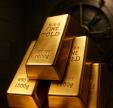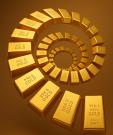Do Central Banks REALLY Control The Market? History Tells Us “No”
Price Action Over The Past Several Years
The market has rallied off the 2009 lows, and most people are convinced that the Fed powered the move. In fact, most were certain that once QE ended, the market would drop. And, they currently maintain this conviction despite the fact that the market has continued significantly higher well beyond the cessation of the QE program.
Anecdotal And Other Sentiment Indications
“Markets are manipulated.” “The only reason the stock market is this high is because of the Fed.”
Yes, I know. We have all heard these reasons as to why the market is as high as it currently stands. Most simply have not believed in the stock market rally, so they have been searching for reasons that “make sense” to them. And, since they cannot find any reason based upon their fundamental perspectives as to why the market is so high, they simply default to “it must be the Fed manipulating the market.”
As for me, when I don’t understand something, it would push me to find a methodology which can appropriately explain why the market has acted in a way that most did not foresee. However, I do not have to engage in such a search, as our methodology expected what we have seen years before it occurred. So, clearly, I am not a believer in the “manipulation” theory bought into by the masses.
Now, I know that most of you who read this article are quite certain in your beliefs that central banks control it all. But, if you actually open your mind to the potential that this is not really true, it may save you a lot of pain in the future. Let me give you some issues with which the manipulation theorists would have to grapple, and are unable to explain, which “should” make you question your beliefs.
The best and most clearly obvious examples I can point to are in the FOREX world.
The Fed And The USD
For those that have been following my analysis since I began posting it back in 2011, you know that I do not buy into the common “market-think.” In fact, when so many were looking for a dollar crash back in 2011, I was calling for a multi-year rally in one of my first public articles:
“It seems we have now completed a truncated 5th wave in a 5 wave move down in the DXY, which means we have now completed Wave 2 down. Therefore, based upon my count, the dollar will now begin a multi-year bull run.”
July 31, 2011
This meant that, back in July 2011, I was expecting a multi-year 3rd wave rally to take hold. And, since a 3rd wave often targets the 1.618 extension of waves 1 and 2, that gave me a 103.50 ideal target for the 3rd wave in the DXY in this multi-year rally I was expecting.
Now, I want to remind you again that when I made this call back in July of 2011, the DXY hit a low of 73.42. So, that meant I was expecting a 41% rally in the DXY. And, in the FOREX world, that is a massive move.
Moreover, I also want to remind you that I maintained this expectation when the Fed was throwing their QE bazookas at the market. For this reason, almost all market participants at the time were certain that the dollar was going to crash. So, most viewed my call for a multi-year rally in the dollar as ridiculous, and that is putting it mildly.
So, even with all that QE being thrown at the dollar, we still saw the massive rally in the DXY that I was expecting. Yes, this was certainly counter-intuitive to common market expectations. But, this was a clear case study in the fact that the fundamentals or the Fed did not control this market, while market sentiment was the clear driver of price, as our analysis of market sentiment kept us on the correct side of what was an “unexpected” market rally.
As we now approach the next Fed rate hikes, I see many again certain that it will be a catalyst for the dollar to rally strongly. However, it seems that most are again relying on market “common-think,” rather than reliable analysis when maintaining such expectations.
First, let’s ask what happened when the Fed began raising rates. The first time the Fed raised rates in years was back in December of 2015. Does anyone know, off hand, what the dollar did thereafter? I will give you a hint: it did not go up. Yes, you guess it, the dollar topped in December of 2015, and dropped from a high of 100.51 to 91.92 within 5 months.
The second time the Fed raised rates, the market rallied for only two days towards the highs we have recently seen, and has declined since that point in time. And, when the Janet Yellen announced last week that they were likely going to raise rates in March, the dollar dropped strongly. And, here I was always told that a rise in rates would cause the dollar to go up. How foolish am I?
So, based upon the recent history, do you really think the Fed is in control of the USD?
China And The Yuan
The same has happened with the Chinese Yuan. Recently, China spent 1 trillion US Dollars (a quarter of their FX reserves) over the past 3 years in an attempt to prop up the Yuan. However, the Yuan still lost close to 14% of its value against the USD over this time period.
Moreover, our lead analyst of our Forex Service, Michael Golembesky, appropriately advised a short in this market despite the Chinese “intervention.” In fact, Mike and I wrote several public articles on this potential trade. And, as you know based upon the downside price direction, he has been quite successful in that trade, even though most others in the market would not consider such a trade in the face of the unprecedented action by the Chinese government.
Ultimately, when truly tested, as in the situations above, the markets have moved completely opposite the “manipulation” attempts by the central banks. They have proven themselves powerless in the face of market forces.
Price Pattern Sentiment Indications And Upcoming Expectations
Below, I have attached a long-term chart which has kept us on the correct side of the stock market for many years. In fact, it kept us looking to the long side back in early 2016 when everyone else was calling for the “crash.” And, yes, I maintained the expectation for this current rally without the need for QE, and without regard for Brexit, Trump, or any other reason for which people believed would crash the market.
But, once this segment of the rally we have labeled as green wave v of 3 completes, I see the potential for a correction for finally take hold, and take us back towards the 2100SPX region. In my humble opinion, as long as the next correction holds over the 2100SPX break out region when we test it during 2018/19, the market will likely continue toward 3000, and this is all without any need for QE.
However, I see the potential for the stock market to “crash” in the mid to late 2020’s, once we complete wave v of 5 of (3), and that “crash” can even be worse than what was seen in 2008. In fact, as you can see from the attached chart, I see the potential for the market to head back to the 1000 region on the S&P500 in the mid to latter part of the 2020’s.
And, when the market continues to crash despite the central banks throwing everything they have at it, only then will the public come to recognize that the central banks are much less powerful then they currently believe. By then, it will be too late for those who believe in the Fed’s omnipotence. So, for those that expect to live through the 2020’s, I think you will likely see the 1000 region on the SPX yet again. It will likely become the “lost decade” for the United States, similar to what was experienced by Japan.
See long-term chart illustrating the wave count on the S&P 500


















